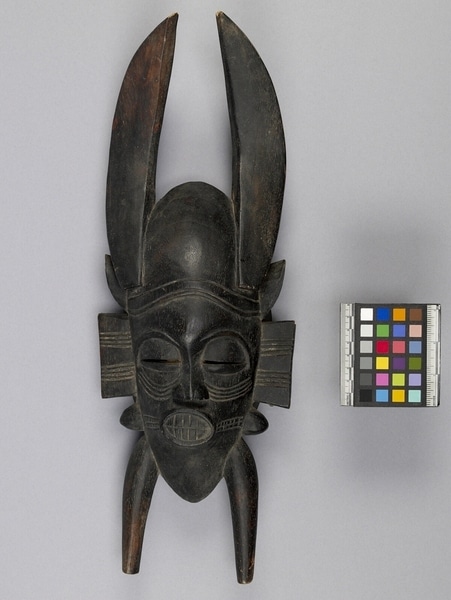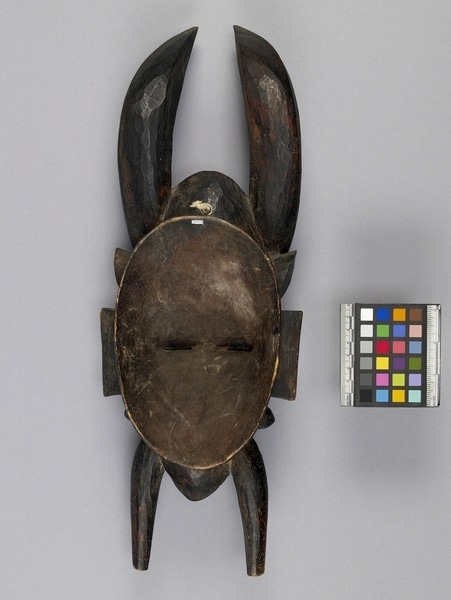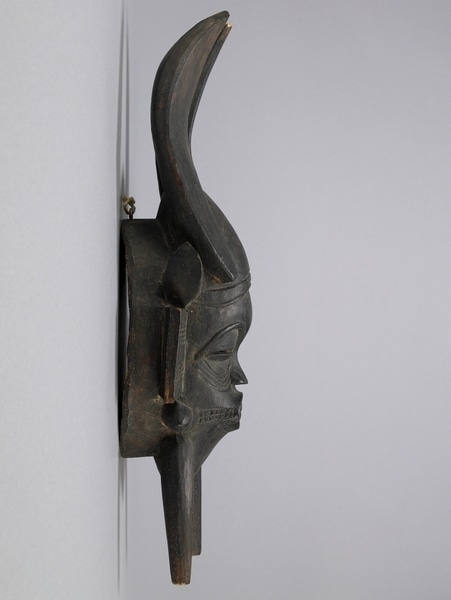Mask Item Number: 1373/6 from the MOA: University of British Columbia




Description
A carved black face mask with two horns that protrude upward and curve concavely. The rounded eyes are carved with slits. The oval mouth with teeth gently protrudes outward. At each side there protrudes, from top to bottom, a vertical rectangle with two sets of four horizontal lines, a knob, and a "leg" which points downward.
History Of Use
Kpelié (face masks) are idealized representations of the beauty of young women; they are used in funerary and initiation rites. Funerary masquerades, organized and performed by the Poro society of a given village, concentrate on honouring the dead and ensuring continuity between the living and the ancestral dead. Within the Fonombele blacksmith group, the Kodöli-yëhë masquerade dance utilizes these face masks in conjunction with specific hip and shoulder movements meant to refer to the feminine qualities of a beautiful young woman. Kodöli-yëhë serves as both entertainment in blacksmith funeral social festivities and as part of the initiation process for male Junior Grade members in blacksmith Poro societies. Kpelié are worn with raffia costumes and the dance is accompanied by songs, chants, and instruments. Until it's independence in 1960, Cote d'Ivoire remained under French rule and its policy of association. Indigenous Senfuo groups were allowed to preserve their customs so long as they were compatible with French interests. However, following mass conversions to Christianity in southern Cote d'Ivoire in the early 20th century and the Massa iconoclast movement in southern Mali in the mid-20th century many indigenous groups abandoned traditinal visual culture. What was left behind was either either collected or later replicated by Senufo artists for the art trade market.
Iconographic Meaning
The grid-like patterns stretching from each corner of the mouth may be a reference to the Senufo practice of scarification (yegi kabaara, or “face scars”). These yegi kabaara identify a person as Senufo.
Item History
- Made in Cote d'Ivoire
- Owned by Helen Purkis before May 30, 1989
- Received from Helen Purkis (Donor) on May 30, 1989
What
Who
- Culture
- Senufo
- Previous Owner
- Helen Purkis
- Received from
- Helen Purkis (Donor)
Where
- Holding Institution
- MOA: University of British Columbia
- Made in
- Cote d'Ivoire
When
- Ownership Date
- before May 30, 1989
- Acquisition Date
- on May 30, 1989
Other
- Condition
- fair
- Accession Number
- 1373/0006